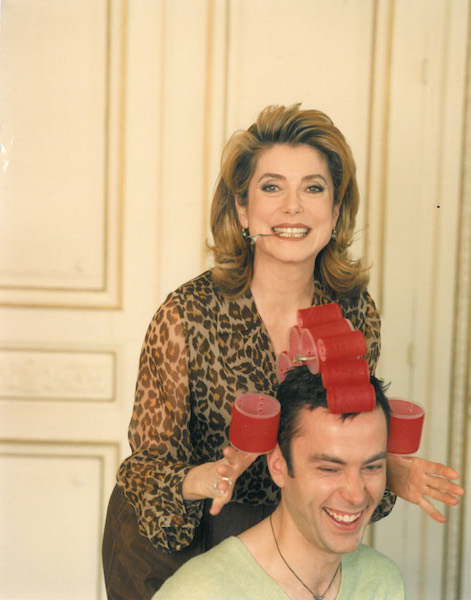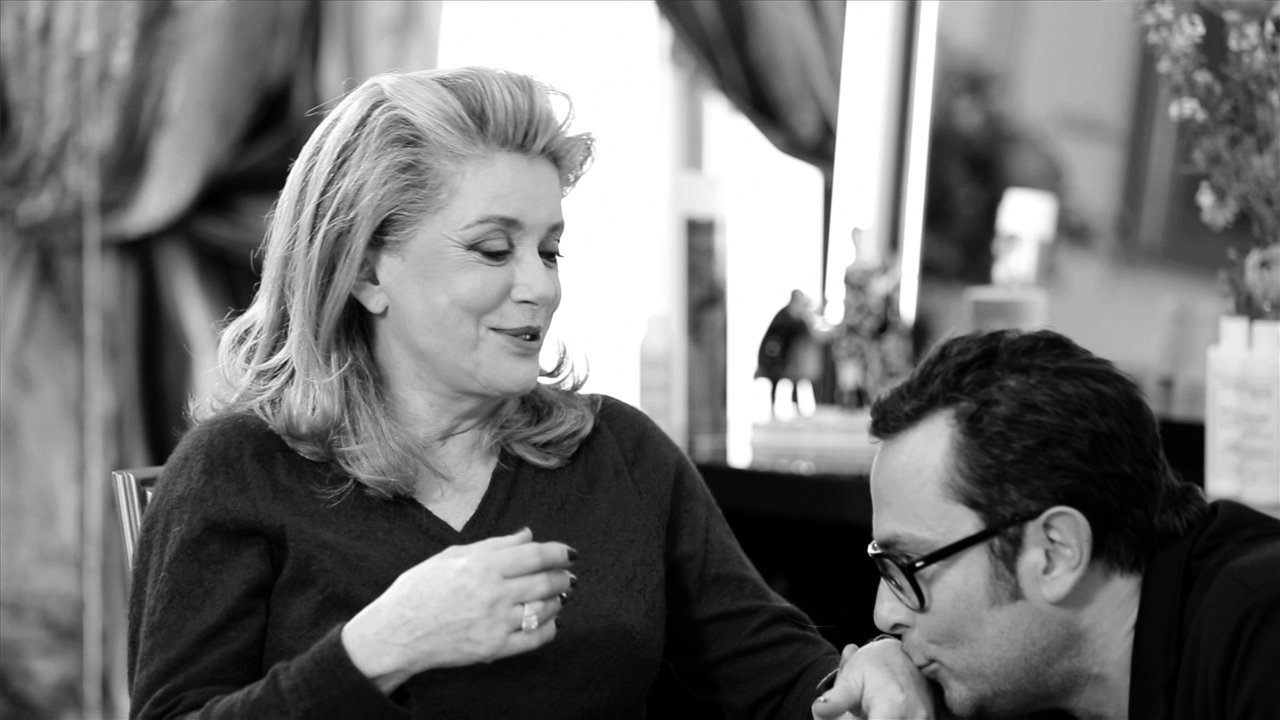News feed

Christophe Robin was always inspired by a woman’s natural beauty. A fascination which stemmed from his mère and grand-mère, it was this fascination which then turned into an obsession, and herein lies the Christophe Robin story. For Robin, it was not about masking and hiding a woman’s beauty with hair, it was about the enhancement of such beauty, and a preoccupation with colour was born. For a creative man, his curiosity in colour transcended artistry. He became fixated with the techniques employed, with the inner workings of how colour played out on the facial topography of a woman. Indeed, it was a game of analytics; the analysis of the face, a game of tones, pigments and complexion, and how to capture her in the most beautiful light. “Showing off their skin tone, eyes and complexion without letting colour dominate, ever,” notes Robin.
“I want people to say a woman is beautiful and not that she has a beautiful hair colour.”
And it seems beautiful women were drawn to Robin. A career built in the ’90s, it was a career very much defined by the ‘Supers’ of the era. First came Stephanie. Then Elle. Then Claudia. And from then on, his Parisian salon became a revolving door of supermodels. It was a time of reinvention; colour was no longer merely just a ‘dye”, it was a beauty accessory.

Then of course, the actresses. It was a phone call from the ultimate French la bomba, Catherine Deneuve, which changed Robin’s life.
“Hi, this is Catherine Deneuve.”
It was that moment, one reflected upon with a burning nostalgia, which Robin credits as the turning point in his career. With a throbbing heart, she continued: “I saw Claudia Schiffer’s hair at a dinner party. My colour isn’t working for me, so I’d like to make an appointment”. For the boy with a Donkey Skin poster plastered on his wall as a child, it was indubitably momentous. And for Christophe, the cinema of hair was born. The stars followed: Faye Dunaway, Jeanne Moreau and Emmanuelle Béart, and to this day, Christophe has maintained the iconic blonde of Deneuve ever since.
Hair care was the inevitable next step, with one clear directive in mind, to maintain and nourish beautiful colour. Rooted in rare, ancestral natural resources, it was the use of such properties – prickly pear oil, lavender, chamomile and lemon – which were to be the hallmarks of his eponymous brand, a brand today, which sits in the upper echelons of haircare.
A career courting romance and beauty; here is part of Christophe Robin’s love story.

You’ve said you were fascinated by a woman’s natural beauty – who are the women you Are most inspired by in your own life?
Definitely Catherine Deneuve, for her wonderful hair type, her grace and career, and also my master at my first salon who taught me to become a hair colourist.
You’ve said Catherine Deneuve was a turning point in your career, why?
The first actress to have pushed the door of my salon was Catherine Deneuve. And of course, other actresses have followed. She is the icon of world cinema. Her career is dazzling. Considered one of the greatest actresses of her generation and globally throughout the second half of the twentieth century, she is the muse of known directors as Jacques Demy, Truffaut and André Téchiné. Her collaboration with me is a chance! Catherine is always on the stage and she does her colour every 8 to 10 days. Her hair are solicit all day. Her legendary blond hair must be perfect, light and bright. She tests on the shooting all of the products. It is exciting to share with her, the formulas, textures, scents. She comes at the office or salon regularly. Catherine is an expert and she is passionate about cosmetics. She is not a “muse” for our brand. She is really involved.
Who is the best head of hair you’ve worked on? And who has had the best memorable colour change to date?
There are so many. Working with Tilda Swinton whom I transformed the hair color from blond to red for Julia Roberts by Eric Zonca, or to brunette for “We need to talk about Kevin” by Lynne Ramsay, or else to choc golden blond for “Amore” by Luca Guadagnino and to a rock platinum blond for “A bigger splash” by the same movie director. Tilda’s a chameleon and all of these colors matched really well to her skin and eyes.
I also transformed Catherine Deneuve twice into a brunette for « Le concile de pierre » by Guillaume Nicloux and for « Mother and daughter » by Julie Lopez Curval. No one noticed this transformation this transformation even though Catherine’s a legendary blond.
I’m also thinking about Kristin Scott Thomas transformed as a blond for The Horse Whisperer, by Robert Redford. Then I transformed her from brunette to blond and to red as well.
How do you view hair colour? Is it just a beauty accessory or can it be more than that?
What I like is when I see a beautiful woman, not the beautiful hair colour. I like colour to be flattering for the skin tone, for the eye tone. What I want is healthy hair, comfort, low maintenance. I don’t want to do something that means you need to visit the salon every three weeks. Because it’s work for your hair at the end of the day.
How should a woman choose a hair colour that’s right for her complexion? Is there a simple guide one can follow?
There’s some girls, look at Catherine Deneuve that were not meant to the blonde, she’s a light brown woman, but you create contrast. You don’t do a plain colour. You work with eye and nose to create contrast, and when the root grows it’s not too obvious. But platinum blonde on a darker girl with dark skin, dark eyes… I don’t do it, because I know then two months after she’s going to stop doing that because it’s too much for her hair. And of course it’s going to be in trouble for six months. If you’re skin feels too pink, or you need to wear more make up to counteract, it’s a good sign that the tone is wrong for you.
What is the biggest myth perpetuated with hair colour?
The biggest myth is that it’s really bad for already damaged hair. Most of the time it is, but sometimes some hair colour tend to improve the hair’s condition: coloration products with acid pH for instance, which don’t really oxidise the fibre and have a mechanical action which closes the hair scales to make it look better, especially if it’s very porous.
Your range has its roots in natural resources, what is the process involved in sourcing these ingredients, and what should be used for what?
Travelling has always been an inspiration for me and for the developments of my products. Morocco especially as its has some the best beauty secrets and ingredients. Like argan oil, like prickly pear seed oil, or rassoul clay. They have so many there, and its so close to Paris just two hours on an airplane and I can discover so many secrets .I remember when I found out about the prickly pear seed oil it was in the mountains, and they use it to heal scarring. And then when I got back to the lab in Paris and they said it’s not produced anywhere yet and it’s so expensive because it’s a 1000 euro per litre. But we did it and it’s one of our biggest successes.
Botanicals and naturals are much maligned for not being ‘active’, what are your thoughts on this?
I think it’s a misconception, as most of my products contain powerful natural ingredients that really do have an impact on the hair and scalp’s health. All of the actives that make a difference and actually treat come from natural ingredients.
You’ve forayed into products that transcend hair, into skin, why and how?
For a long time, we didn’t think of the scalp as an issue, we always treated the hair. Because of poor rinsing, shampoos and styling products suffocate the scalp and impose to wash your hair every day. They make your hair greasy and could sometimes trigger hair loss…Some women experience discomfort and complain about itches after coloUring their hair. For decades, grandmothers exfoliate their scalp with sea salt and water in order to eliminate the chemical residues left by colouring treatments. Apothecaries have always recognised salt as the solution to sensitive scalp.
How do French women approach colour, as oppose to Australian women?
French women know how important it is to care of their hair. To get a bright colour and a nice texture they can dedicate several hours per week to apply masks and natural oils. Having healthy hair is the secret to spend less time in styling.
The Christophe Robin Range is now available at Sephora Australia.











